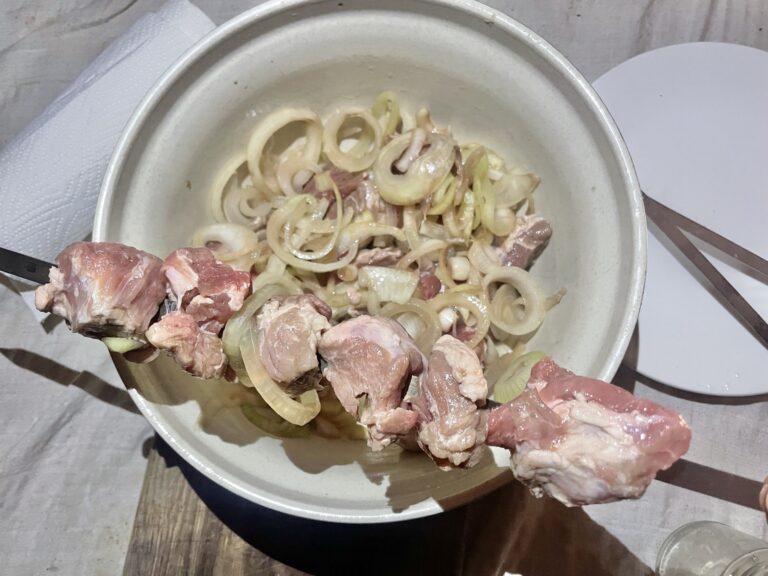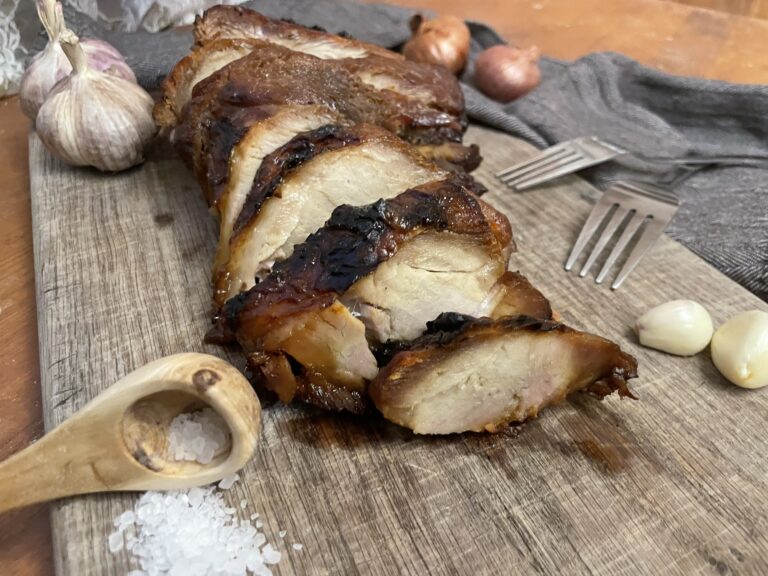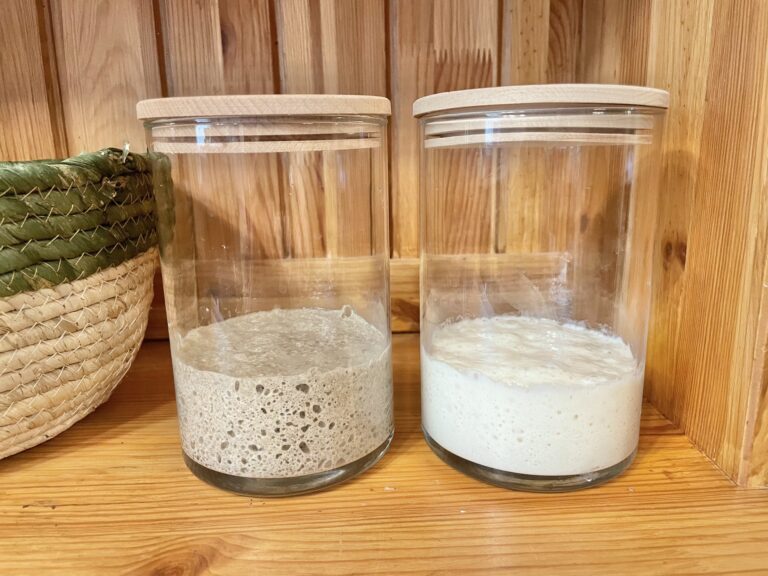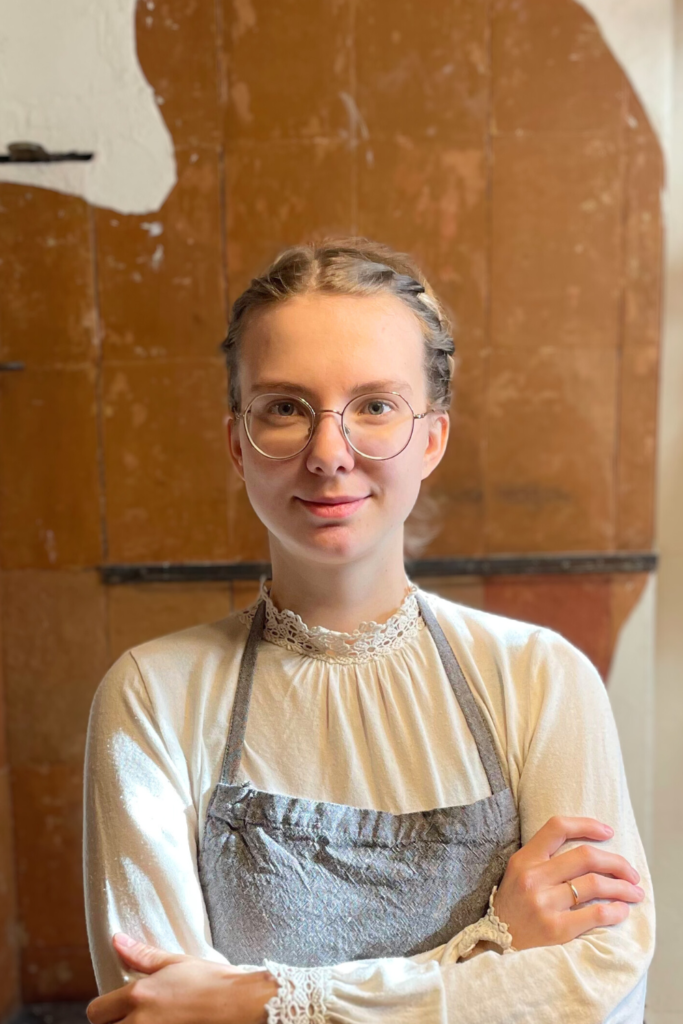For my family, there’s probably no greater joy than hearing that mashed potatoes are on the menu for dinner. To be honest, I haven’t come across anyone yet who doesn’t love mashed potatoes.
My great joy has always been when my grandmother makes mashed potatoes, hers are just so good and always a huge hit! I learned how to make mashed potatoes from her, and I’m sharing my acquired knowledge here.
I’ve noticed that when making mashed potatoes, people always end up eating the most potatoes. While boiled potatoes require the least amount, and fried potatoes significantly more, when it comes to making mashed potatoes, we’re talking about quite substantial quantities.
Our boys are still young, so when preparing meals, I consider three people, and even then, I make 2kg of potatoes because otherwise, the food runs out quickly.

Creamy mashed potatoes can be made in various ways. You can add whole milk, sour cream, heavy cream, cream cheese, and even parmesan cheese. In our family, mashed potatoes have always been made with milk, and this recipe is made accordingly.
Truly authentic mashed potatoes are soft with a silky texture. However, if mashed potatoes are made incorrectly, they can turn blue, sticky, and rubbery. I’ll explain shortly how to prevent that.
Before you start reading, come and follow me on Instagram, Facebook, and Pinterest!
Which Potatoes to Use for Mashed Potatoes
There are various types of potatoes, some are very starchy and prone to breaking when boiled, while others have a dense texture.
Potatoes with a firmer texture, and less starchy, are suitable for frying. However, the more starchy and mealy the potato, the better it is for mashed potatoes, resulting in an exceptionally soft and smooth texture. Probably the best potatoes to use are russet potatoes.
In reality, the type of potatoes isn’t the most important thing. Delicious mashed potatoes can be made from all kinds of potatoes, with just a slight difference in texture.
Ingredients for Mashed Potatoes
I try to keep my go-to recipe for mashed potatoes as simple as possible because I believe that simplicity is magical. Therefore, the recipe has only a few basic ingredients.
Milk – Adds creaminess and prevents the mashed potatoes from being too thick.
Butter – Fried butter gives the mashed potatoes a good flavor and also contributes to a smoother texture. However, butter can quickly burn, so make sure you use medium heat. You may use both salted and unsalted butter.
Onion – Fried onions also add good flavor to the mashed potatoes.
Salt
Check the recipe card below for ingredient quantities and nutritional information!
Making Mashed Potatoes
- Peel the potatoes. Although I often leave potato skins on when making fried or boiled potatoes to retain maximum vitamins, for mashed potatoes, it’s recommended to remove the skins for a smoother and more even texture.
- Take a sufficiently large pot, add the potatoes, and boil with salt. Potatoes boil for 30-60 minutes, depending on their size. Larger potatoes take longer to cook. I usually cut the potatoes into smaller pieces to speed up the cooking process. It’s better to boil the potatoes longer rather than shorter, as insufficiently cooked potatoes result in a poor texture.
- While the potatoes are boiling, peel and chop the onion into small pieces.
- Fry the onion in a small saucepan with butter until golden brown.
- Add milk to the pan with the onion and fat. It’s crucial to remember that the milk must be heated before adding it to the mashed potatoes. If cold milk is added, the mashed potatoes may turn blue or gray, and the texture will be sticky and unappetizing. Heat the milk, but it doesn’t need to boil.
- Once the potatoes are cooked, pour out the water from the pot.
- Add the onion from the pan along with the hot milk and melted butter to the pot of potatoes, and mash the potatoes with a potato masher or use potato ricer. For the perfect consistency, you can use a hand mixer or stand mixer for the final touch. Using an immersion blender is not recommended, as it can make the texture sticky.
- Ensure that you have added plenty of salt, and if needed, add a little bit more as necessary.
- Enjoy the prepared dish with gravy and your favorite meat – that’s what we love the most!
Storing Leftover Mashed Potatoes
If there’s leftover mashed potatoes, it keeps well in the refrigerator for a few days. Mashed potatoes can also be frozen if you want to preserve them for a longer period.
Sometimes, it’s even practical to prepare a larger quantity of mashed potatoes and freeze them, allowing for quick and easy family meals on busier days. If space is limited for storing leftover mashed potatoes, you can explore a variety of exciting recipes to use up the surplus. One of our family favorites is Shepherd’s Pie.
Reheating Mashed Potatoes
Reheating mashed potatoes in a pot can be tricky without them sticking and burning. Therefore, the easiest way to give mashed potatoes a new life is by frying them in a pan. Fry the mashed potatoes in a pan, stirring occasionally, until they turn golden brown. Fried mashed potatoes have a distinct taste, but certainly not worse.
If you want to maintain the texture of the mashed potatoes, add some milk before heating and warm it slowly over medium or low heat, stirring frequently to prevent burning. You can also put the mashed potatoes in an ovenproof dish and heat them at around 300°F (150°C).
Ideas and Tips
- My dear husband always praises me when I make mashed potatoes without using an electric mixer and instead mash them by hand. Then the mashed potatoes somehow feel more authentic, and small potato pieces in the mash only add to the goodness.
- Inhaling the hot steam from boiling potato water can be soothing if you have a cough. Potato steam has an invigorating effect on the lungs.
- I’ve tried adding grated roasted garlic to mashed potatoes, but in my opinion, garlic doesn’t suit mashed potatoes very well.
- Potato skins don’t need to be discarded, they can be used, for example, in homemade broth.
- You may use olive oil, fresh herbs, or black pepper for additional great flavor.
- Mashed potatoes can also be made in a vegan version, without any animal-derived ingredients. In this case, butter can be replaced with vegetable oil and milk with plant-based milk. However, it’s worth noting that plant-based milk adds a distinct flavor to the mash, which may not be to everyone’s liking.
- Mashed potatoes are excellent for baby food, eliminating the need to prepare a separate meal. If you’re hesitant to introduce dairy to a very young child, you can set aside a small portion before adding milk.
I truly hope you will find this mashed potato recipe useful and can enjoy it as a perfect side dish, whether for an upcoming Thanksgiving dinner or just a simple family supper.


How to Make Creamy Mashed Potatoes (Easy Recipe)
Mashed potatoes are soft with a silky texture. However, if mashed potatoes are made incorrectly, they can turn blue, sticky, and rubbery.
Ingredients
- 2kg (5lbs) of potatoes
- 400ml of milk
- 4 tsp of salt
- 1-2 onions (optional)
- 100g of butter
Instructions
- Peel the potatoes. Although I often leave potato skins on when making fried or boiled potatoes to retain maximum vitamins, for mashed potatoes, it's recommended to remove the skins for a smoother and more even texture.
- Take a sufficiently large pot, add the potatoes, and boil with salt. Potatoes boil for 30-60 minutes, depending on their size. Larger potatoes take longer to cook. I usually cut the potatoes into smaller pieces to speed up the cooking process. It's better to boil the potatoes longer rather than shorter, as insufficiently cooked potatoes result in a poor texture.
- While the potatoes are boiling, peel and chop the onion into small pieces.
- Fry the onion in a small saucepan with butter until golden brown.
- Add milk to the pan with the onion and fat. It's crucial to remember that the milk must be heated before adding it to the mashed potatoes. If cold milk is added, the mashed potatoes may turn blue or gray, and the texture will be sticky and unappetizing. Heat the milk, but it doesn't need to boil.
- Once the potatoes are cooked, pour out the water from the pot.
- Add the onion from the pan along with the hot milk and melted butter to the pot of potatoes, and mash the potatoes with a potato masher or use potato ricer. For the perfect consistency, you can use a hand mixer or stand mixer for the final touch. Using an immersion blender is not recommended, as it can make the texture sticky.
- Ensure that you have added plenty of salt, and if needed, add a little bit more as necessary.
- Enjoy the prepared dish with gravy and your favorite meat - that's what we love the most!
Nutrition Information:
Yield: 4 Serving Size: 1Amount Per Serving: Calories: 112Total Fat: 2gSaturated Fat: 1gTrans Fat: 0gUnsaturated Fat: 1gCholesterol: 8mgSodium: 2380mgCarbohydrates: 19gFiber: 2gSugar: 8gProtein: 5g





